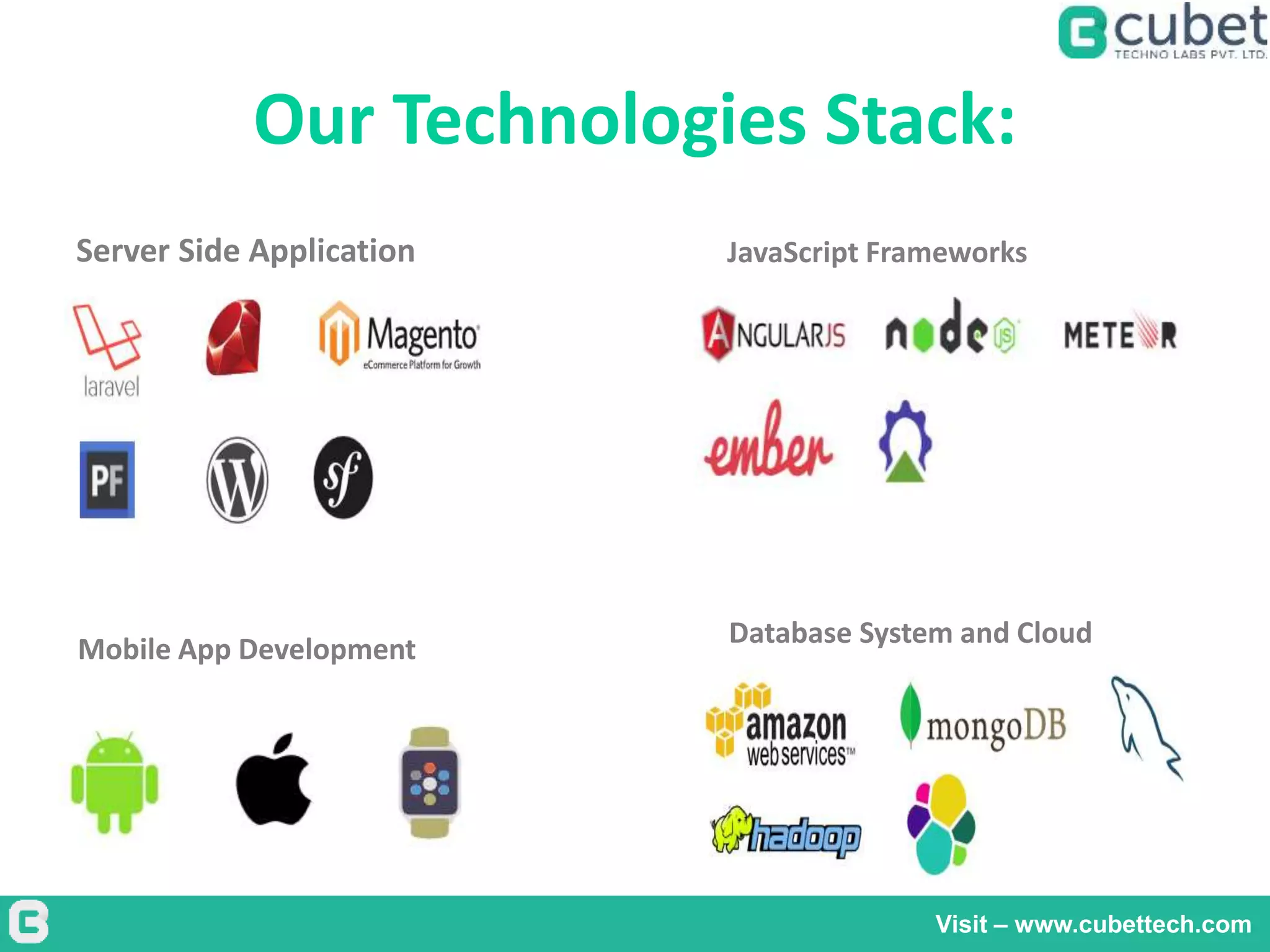The document presents a seminar on AngularJS 2 by Cubet Techno Labs, a consulting company founded in 2007, specializing in web and mobile applications. It discusses AngularJS as a framework for dynamic web apps, highlights the evolution from AngularJS 1 to 2, and explains key concepts such as components, dependency injection, and the simplification of directives. The document concludes by emphasizing the user-friendly nature of Angular 2 compared to its predecessor, Angular 1.
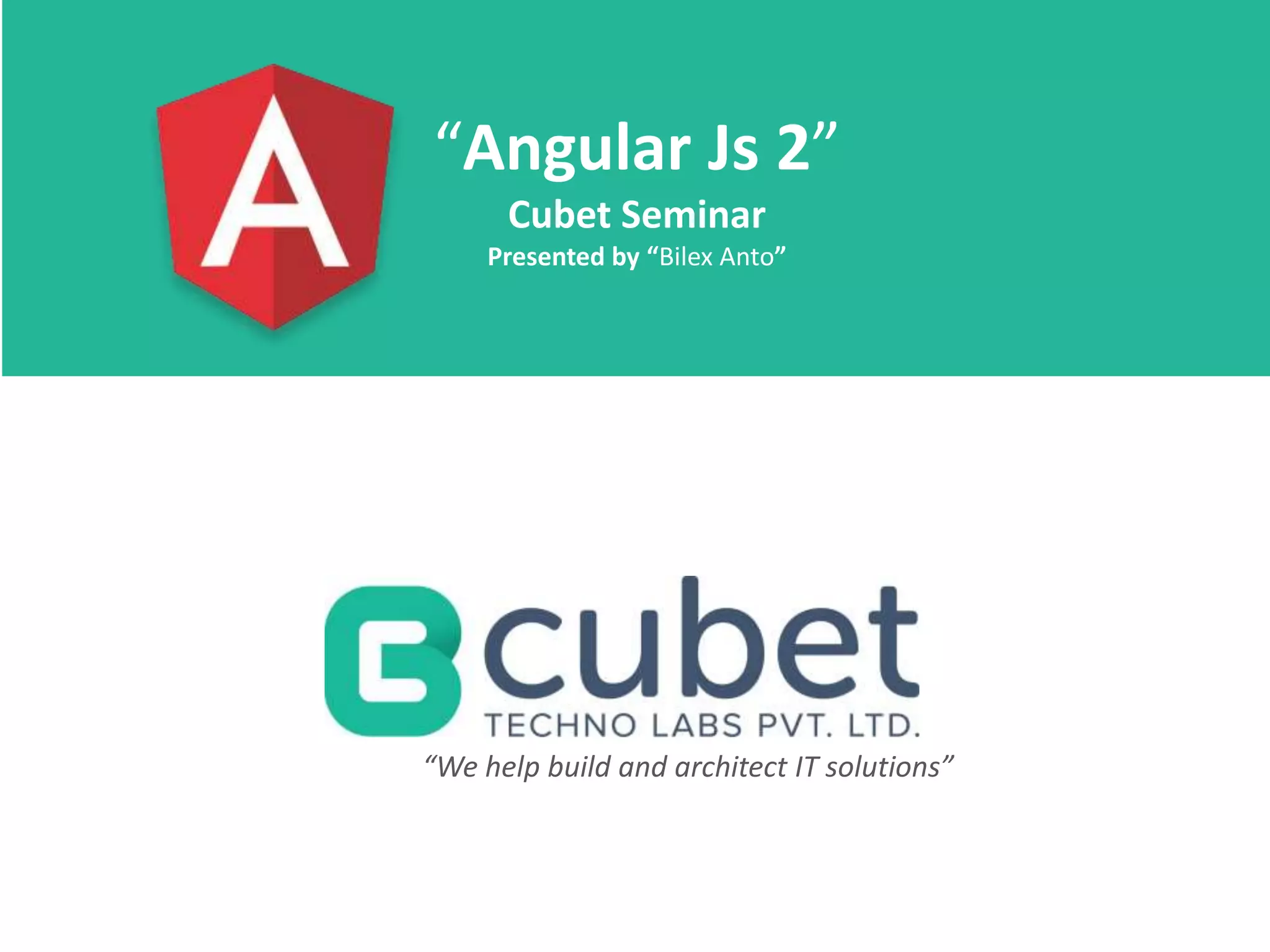
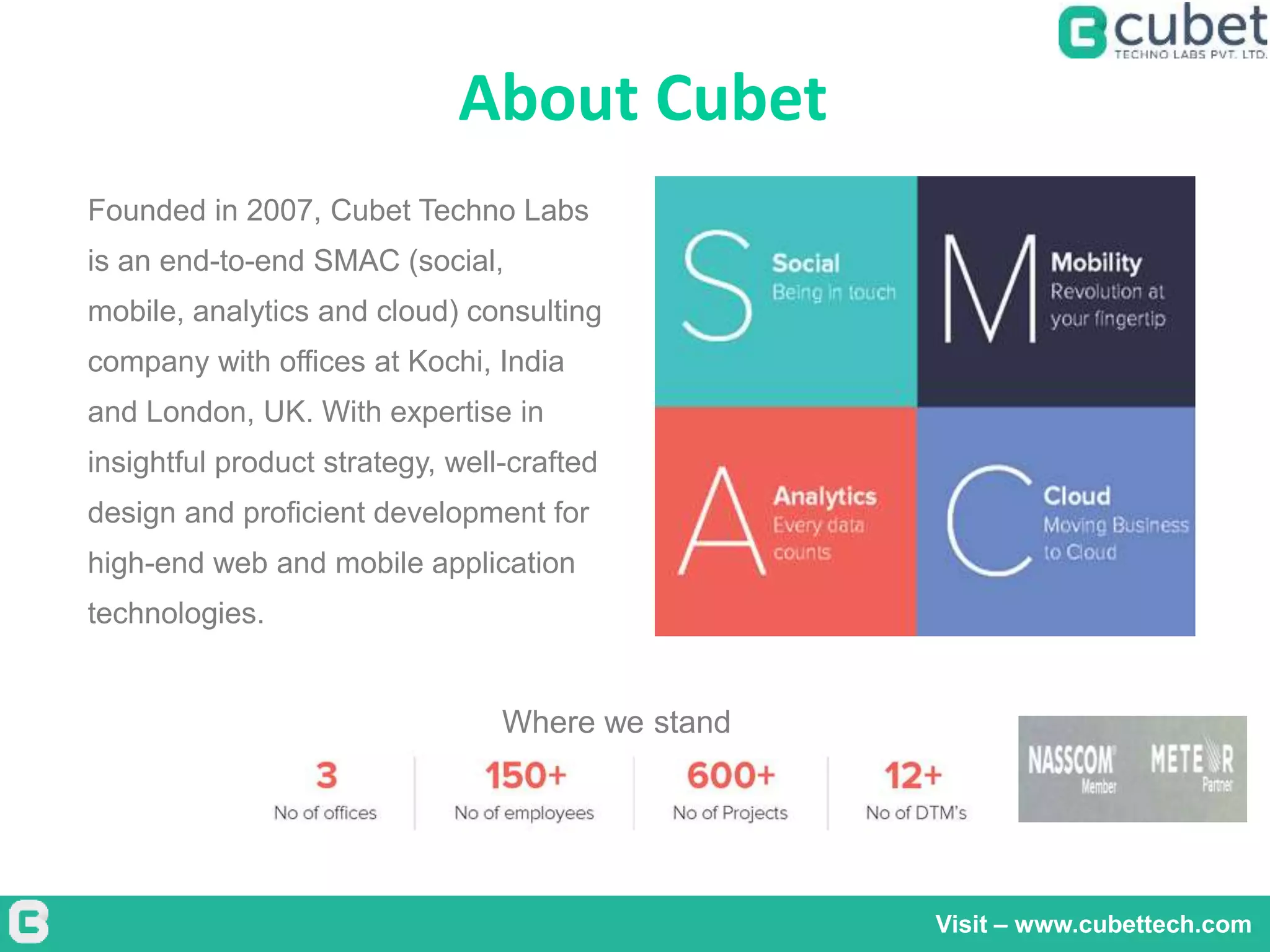
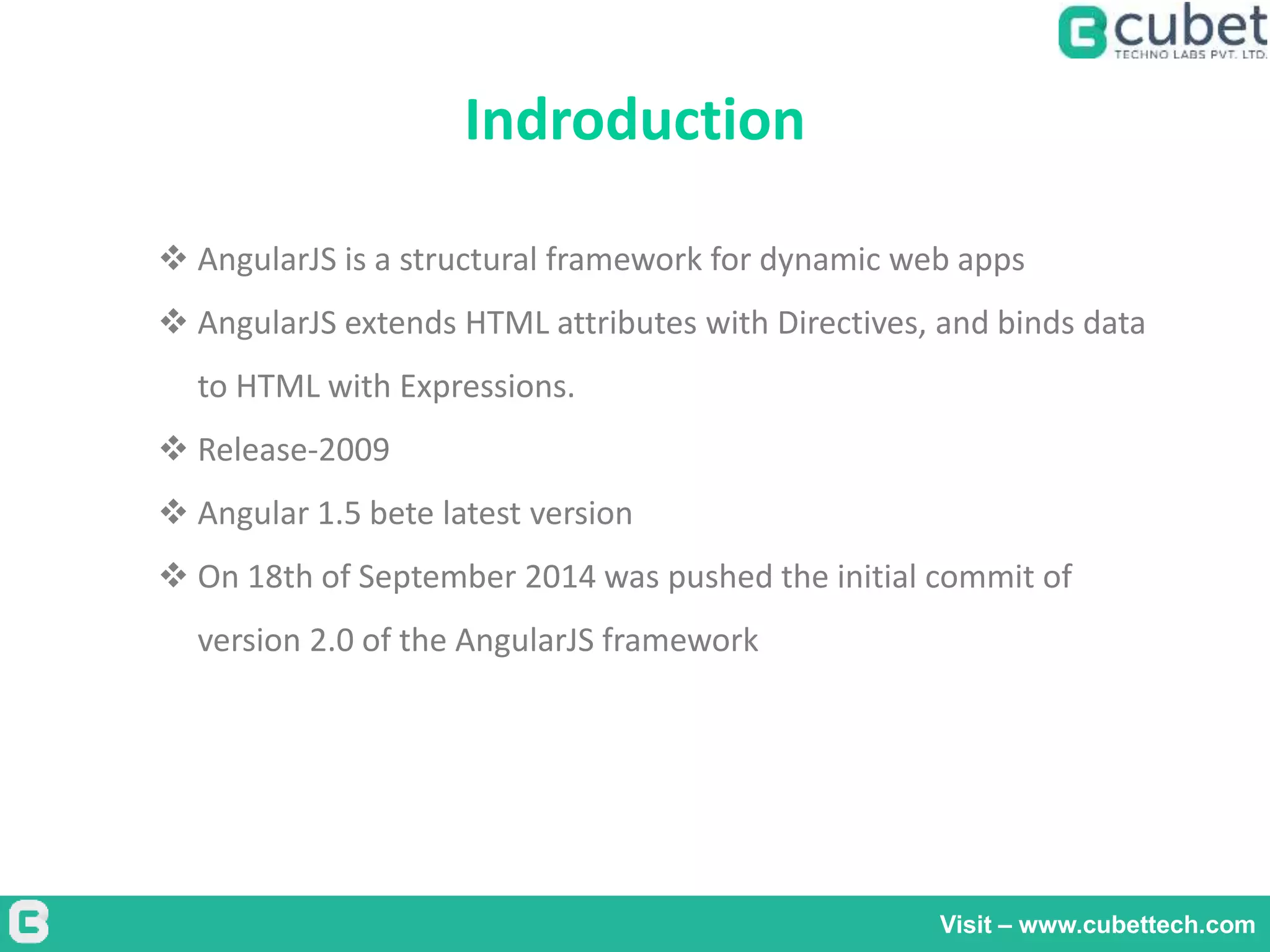
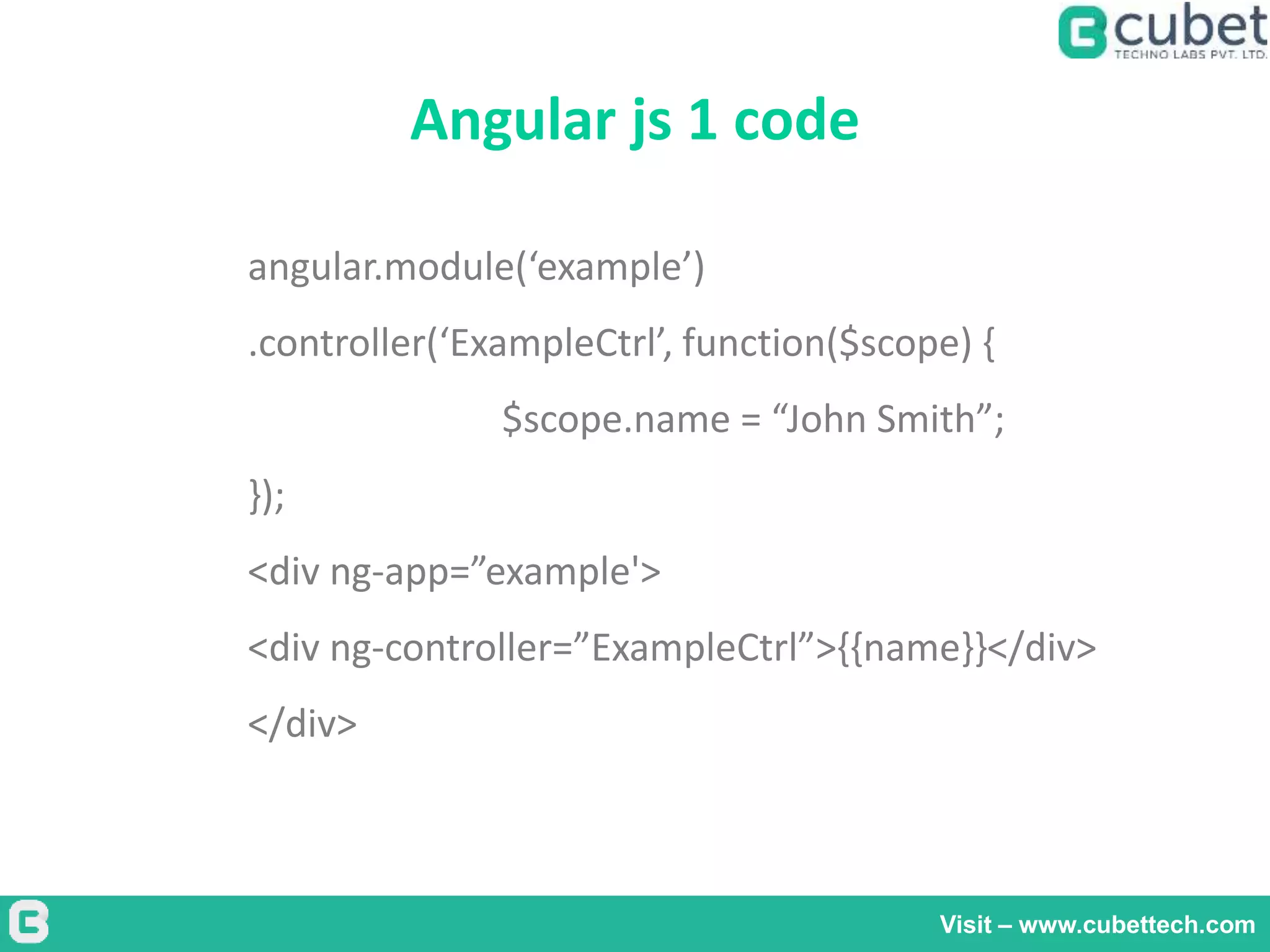
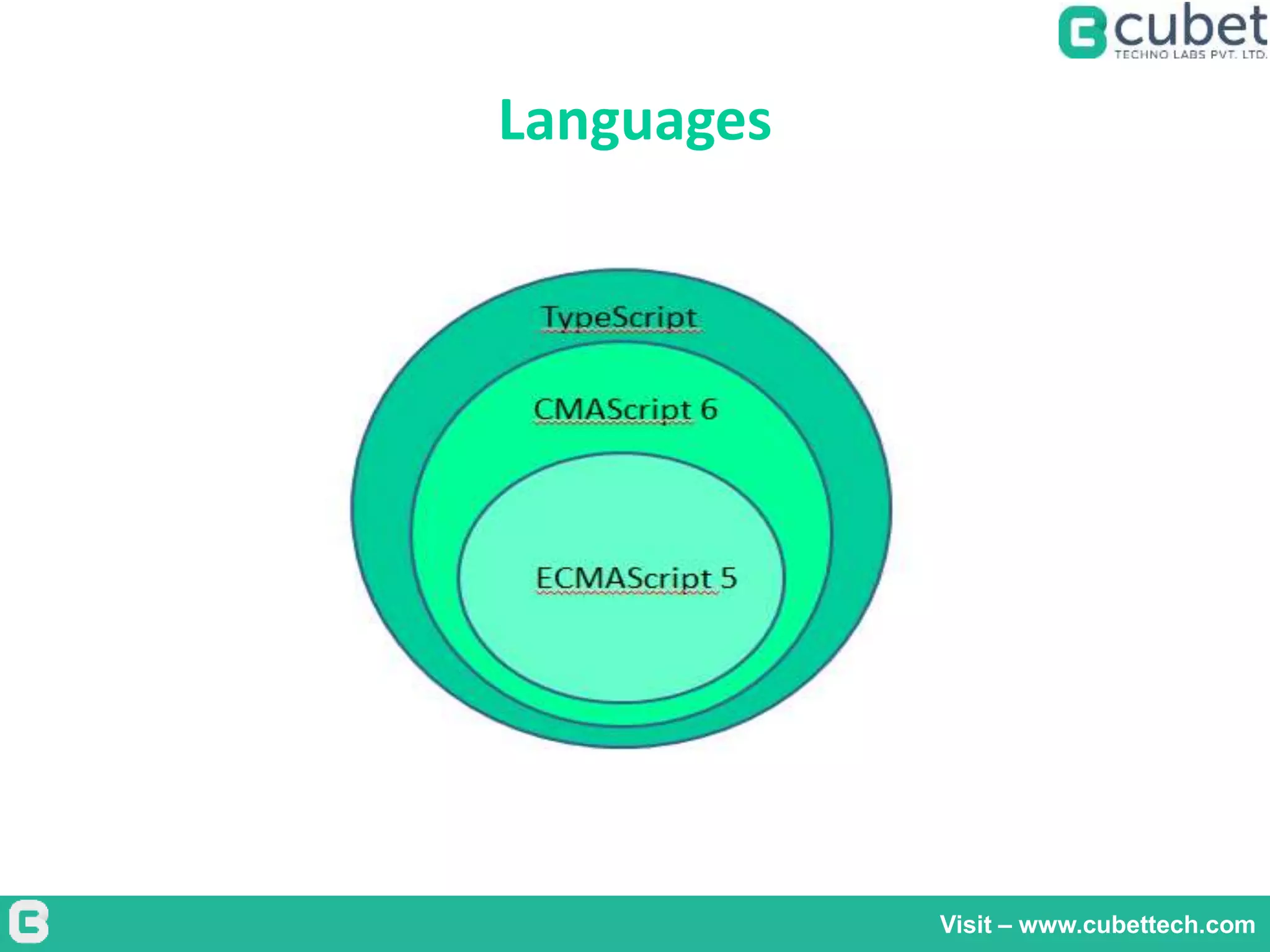
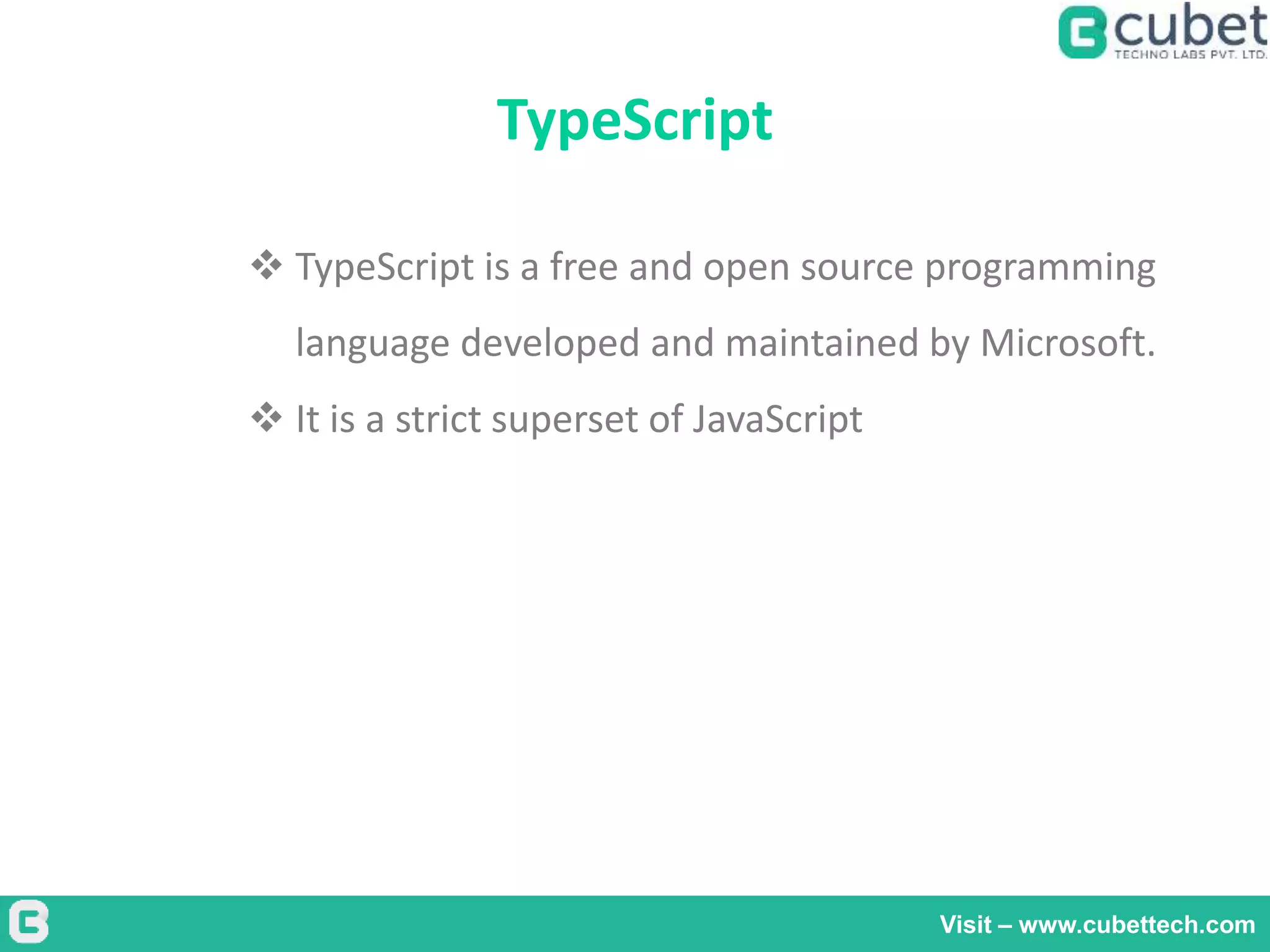
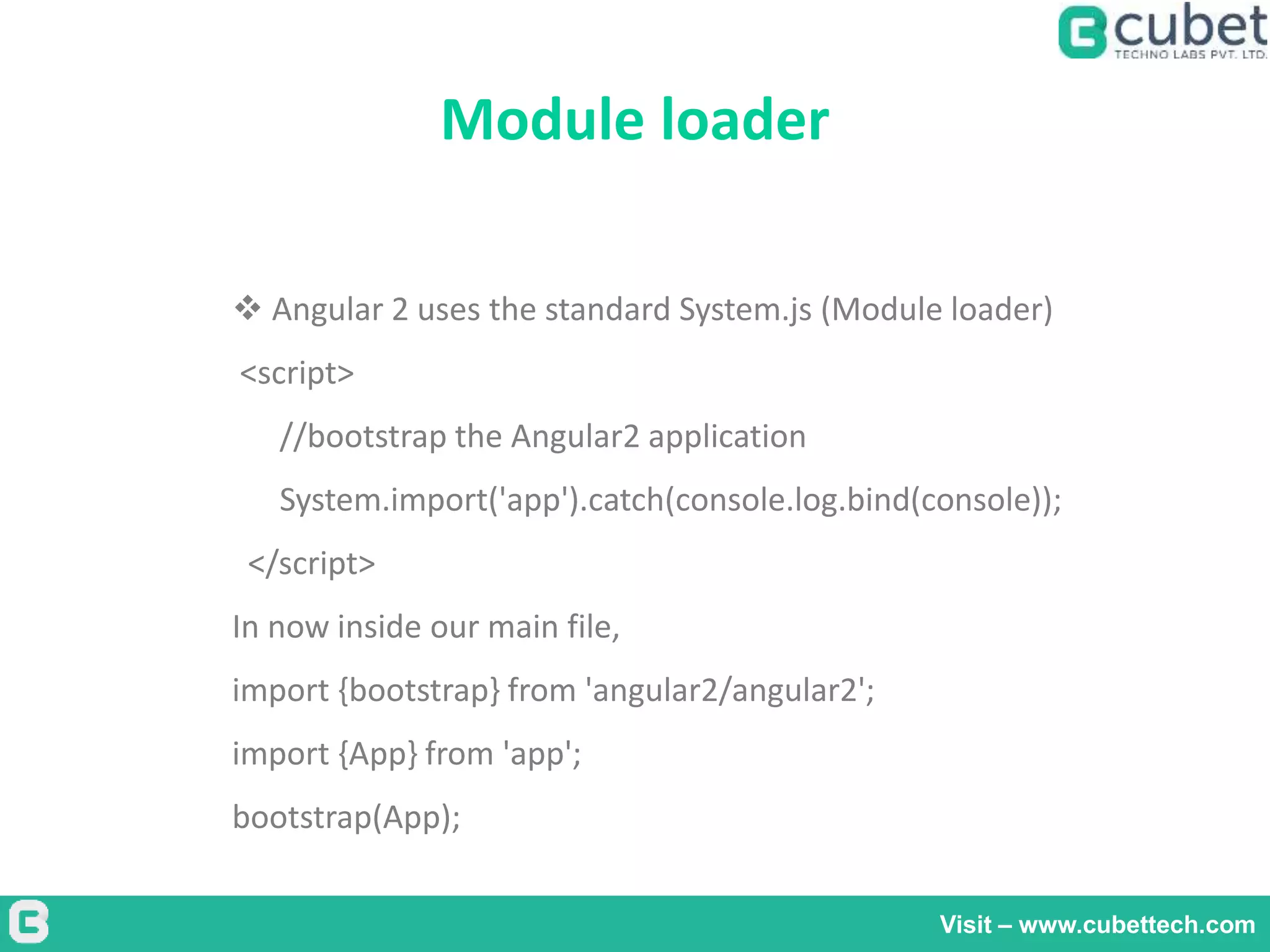
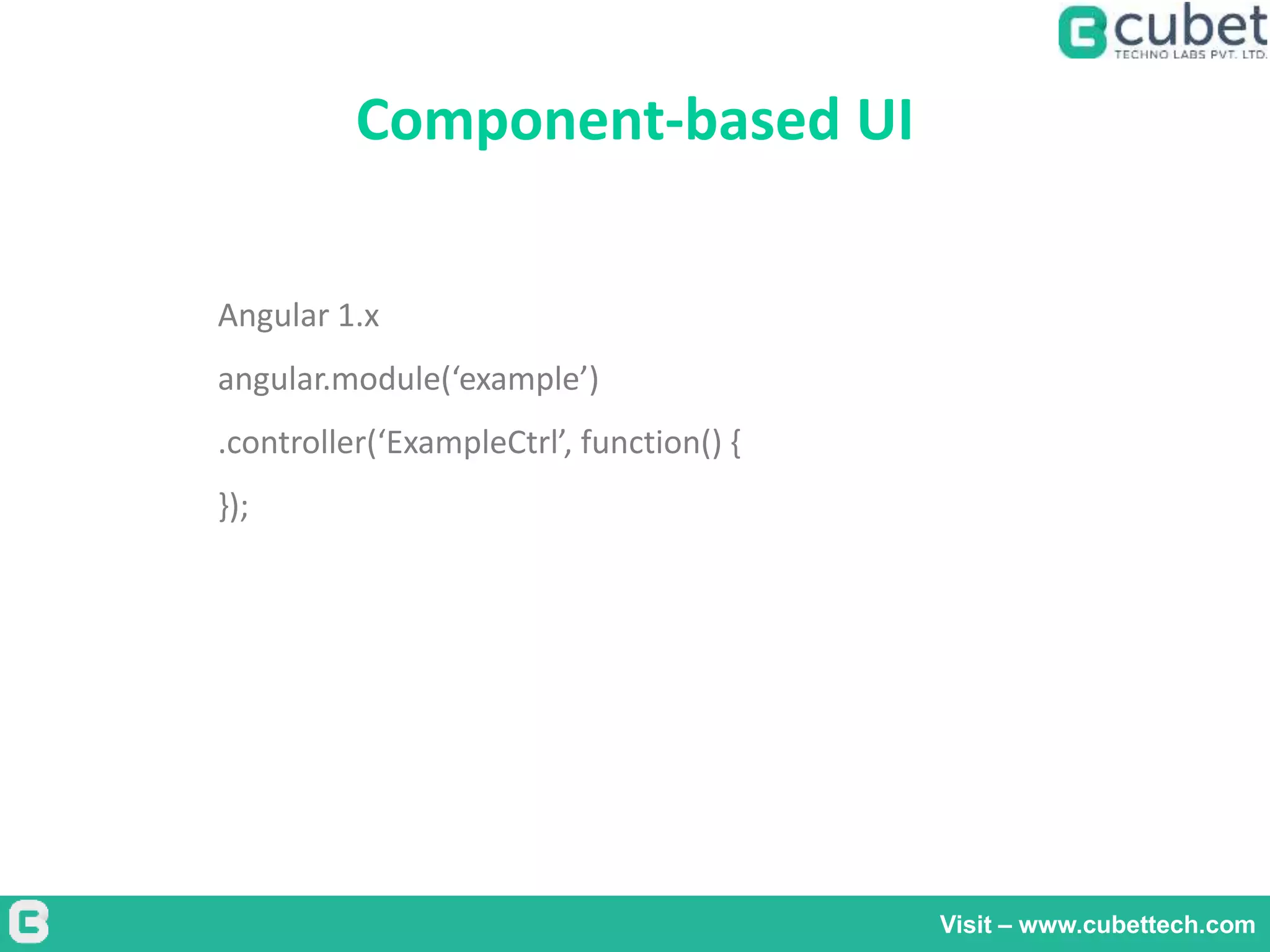
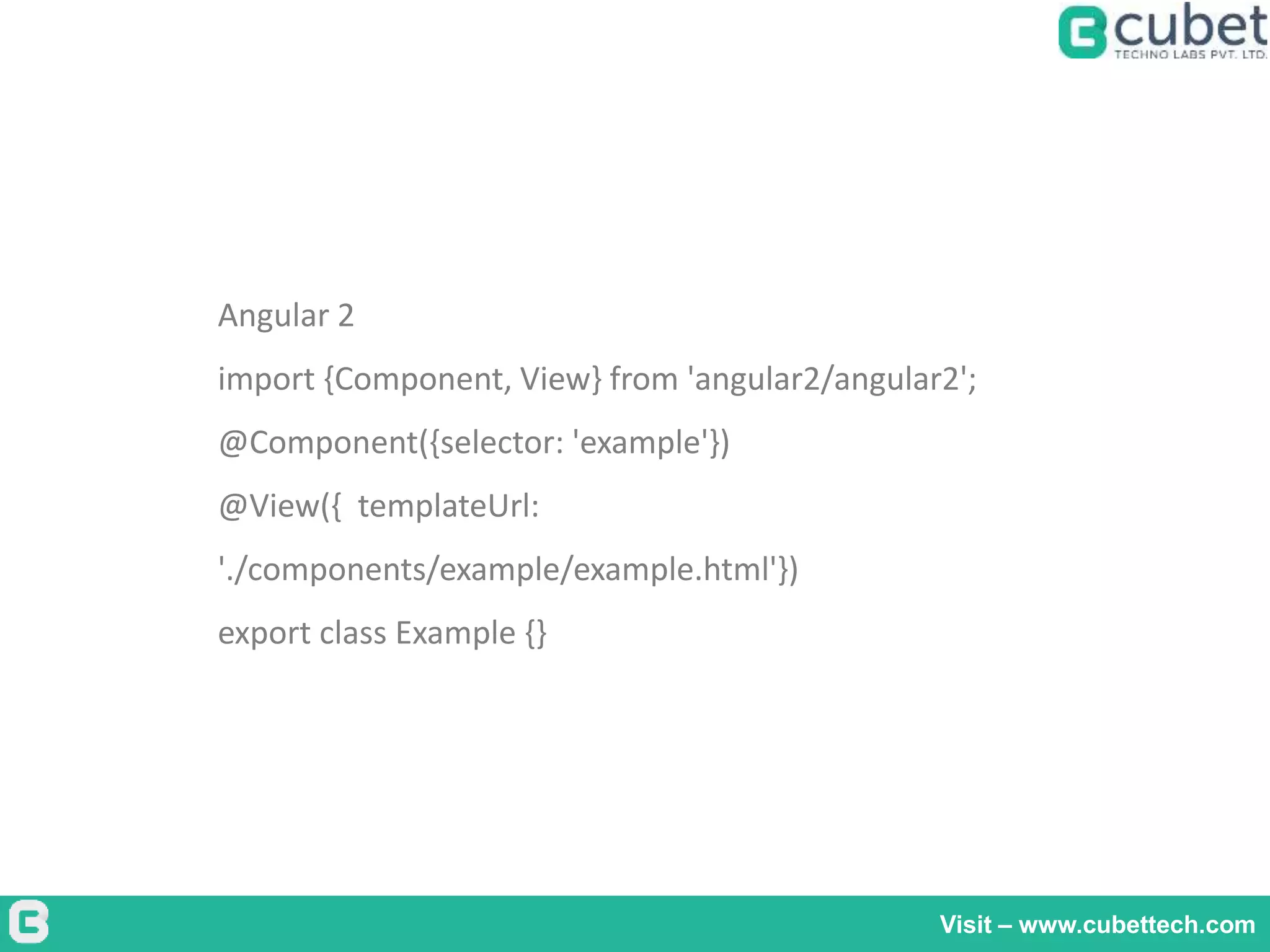
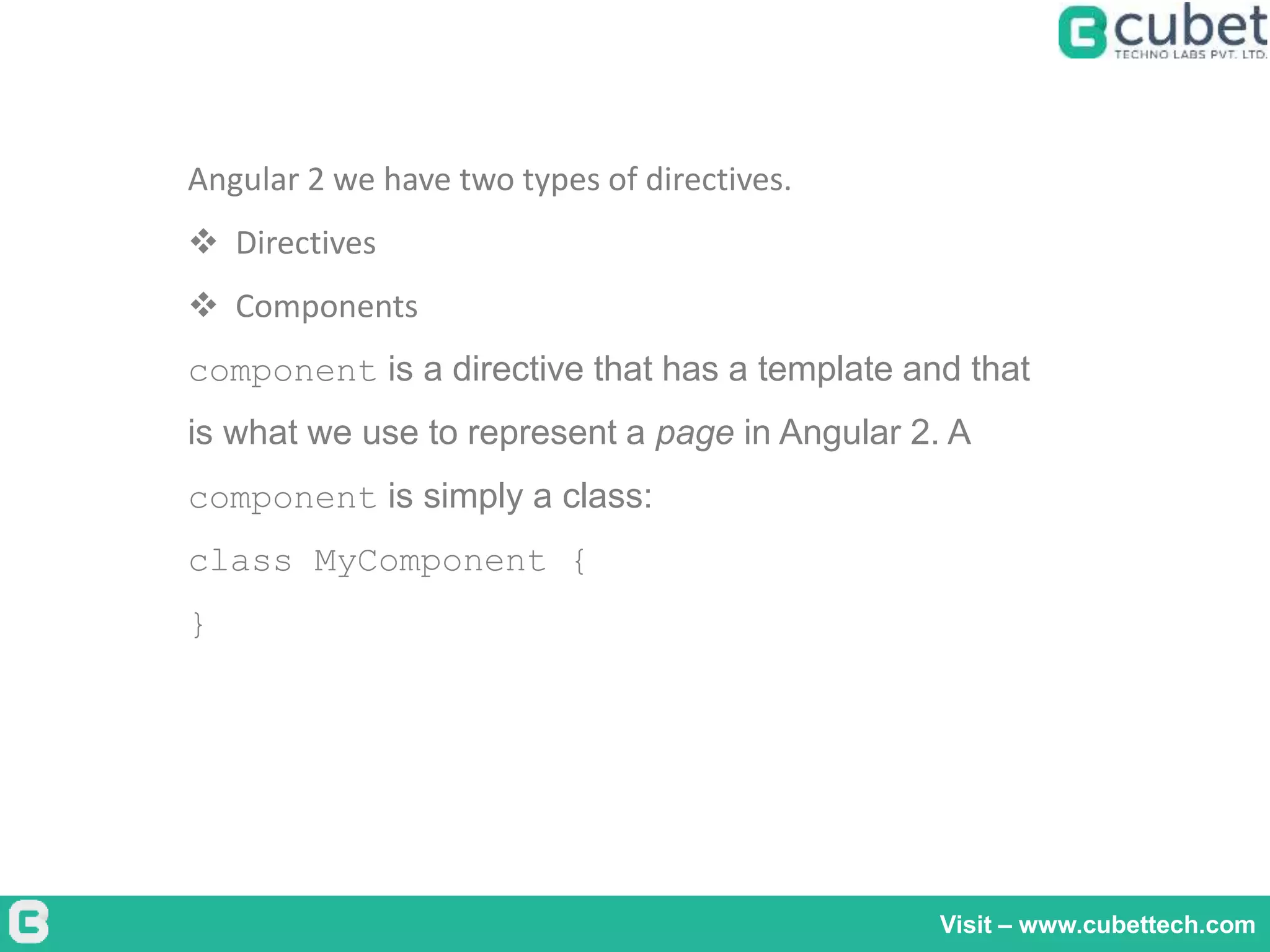
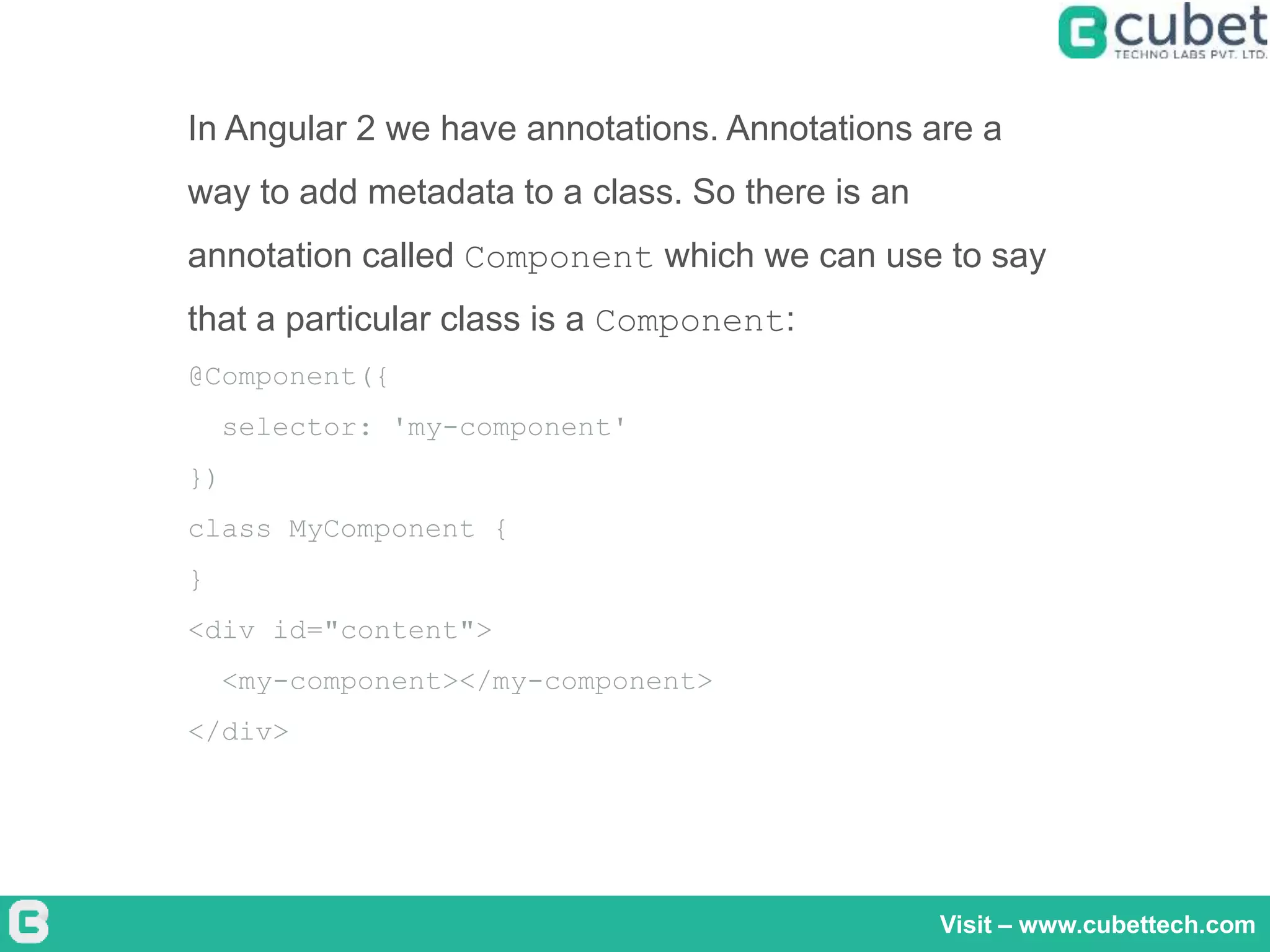
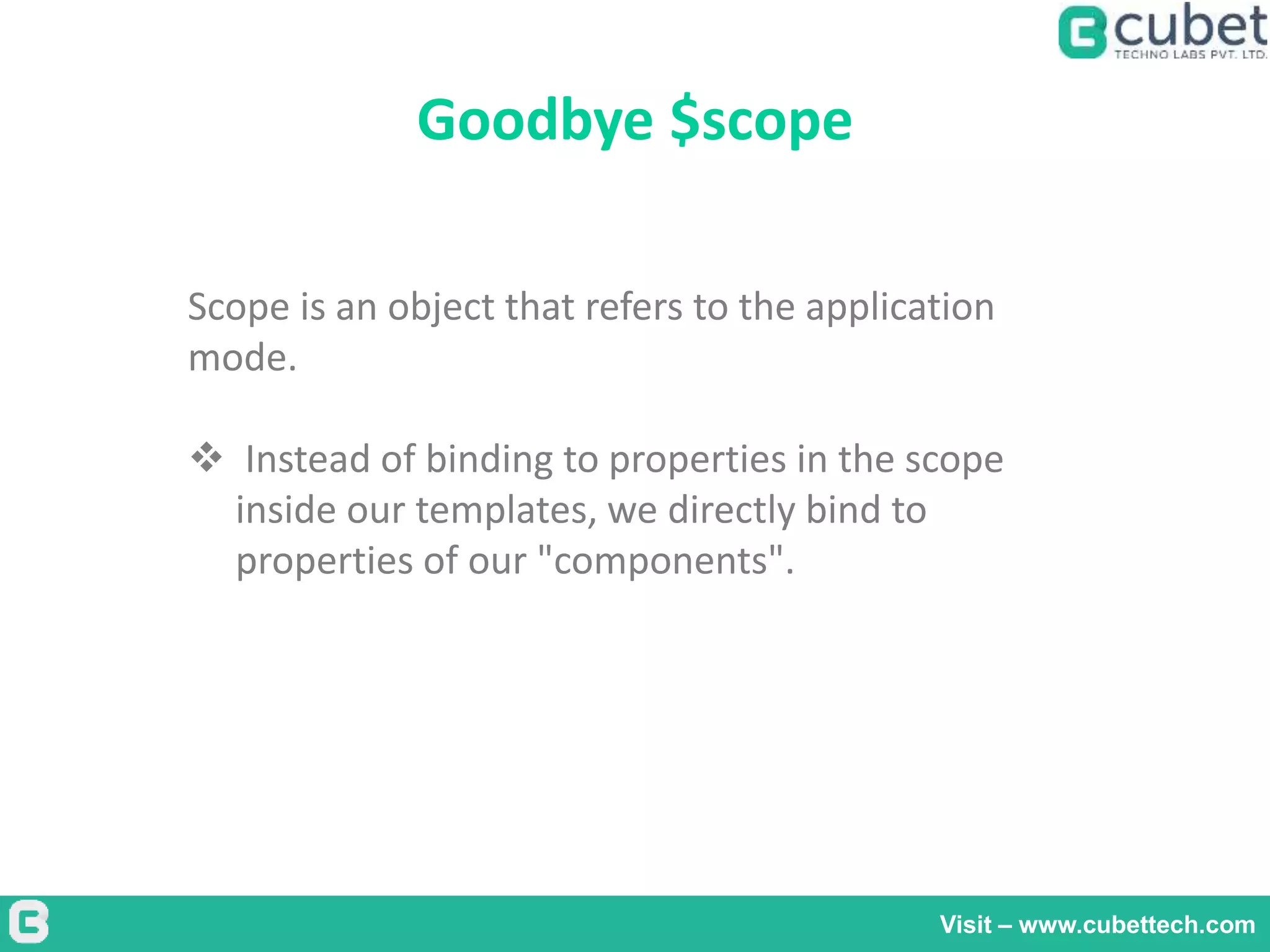
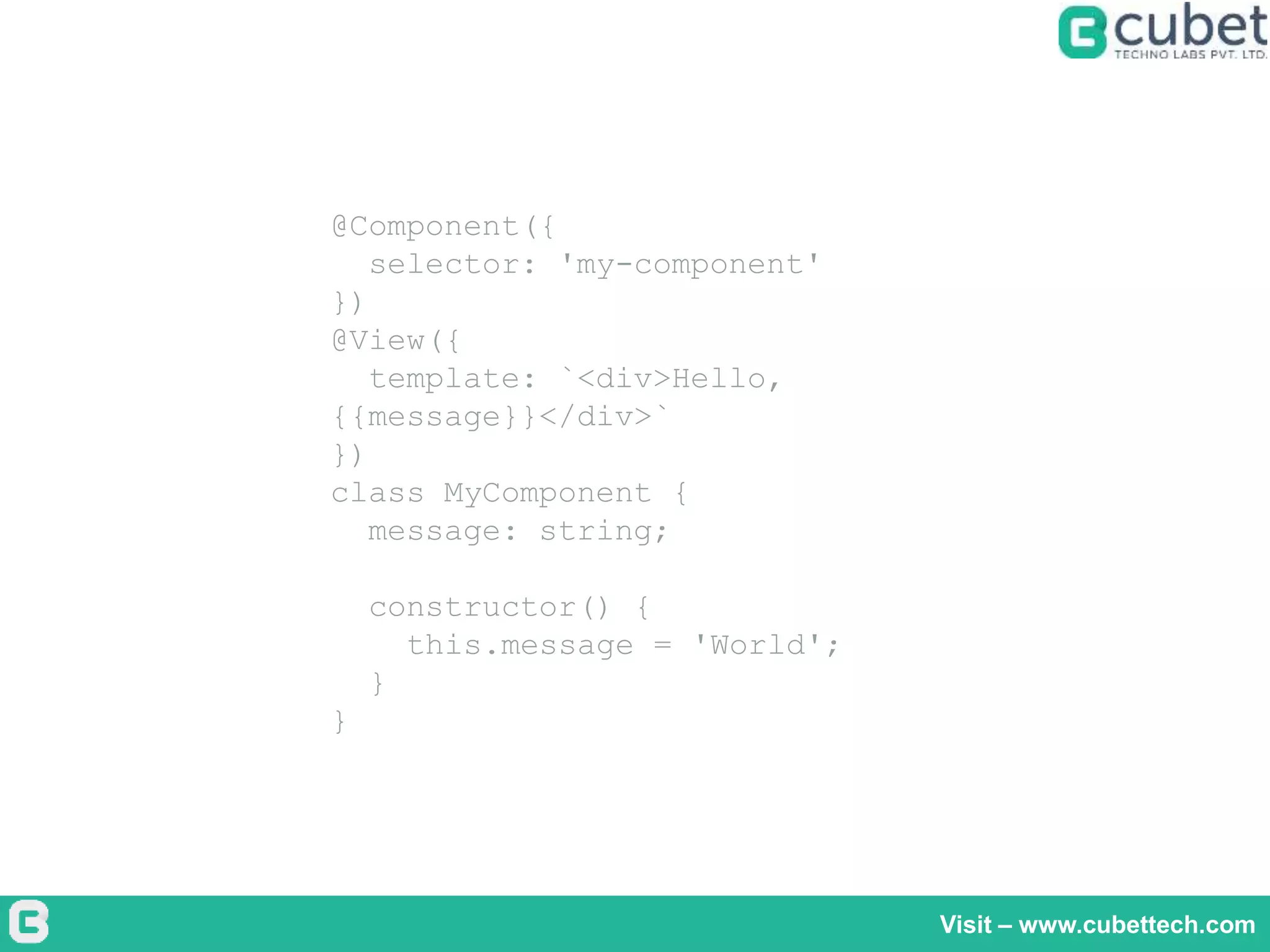
![Dependency Injection
Visit – www.cubettech.com
Dependency Injection (DI) is a software design pattern that deals
with how components get hold of their dependencies.
Angular1
var myModule = angular.module("myModule", []);
myModule.value("numberValue", 999);
myModule.controller("MyController", function($scope, numberValue) {
console.log(numberValue);
});](https://image.slidesharecdn.com/angularjs2ppt-170710045050/75/Angularjs-2-14-2048.jpg)
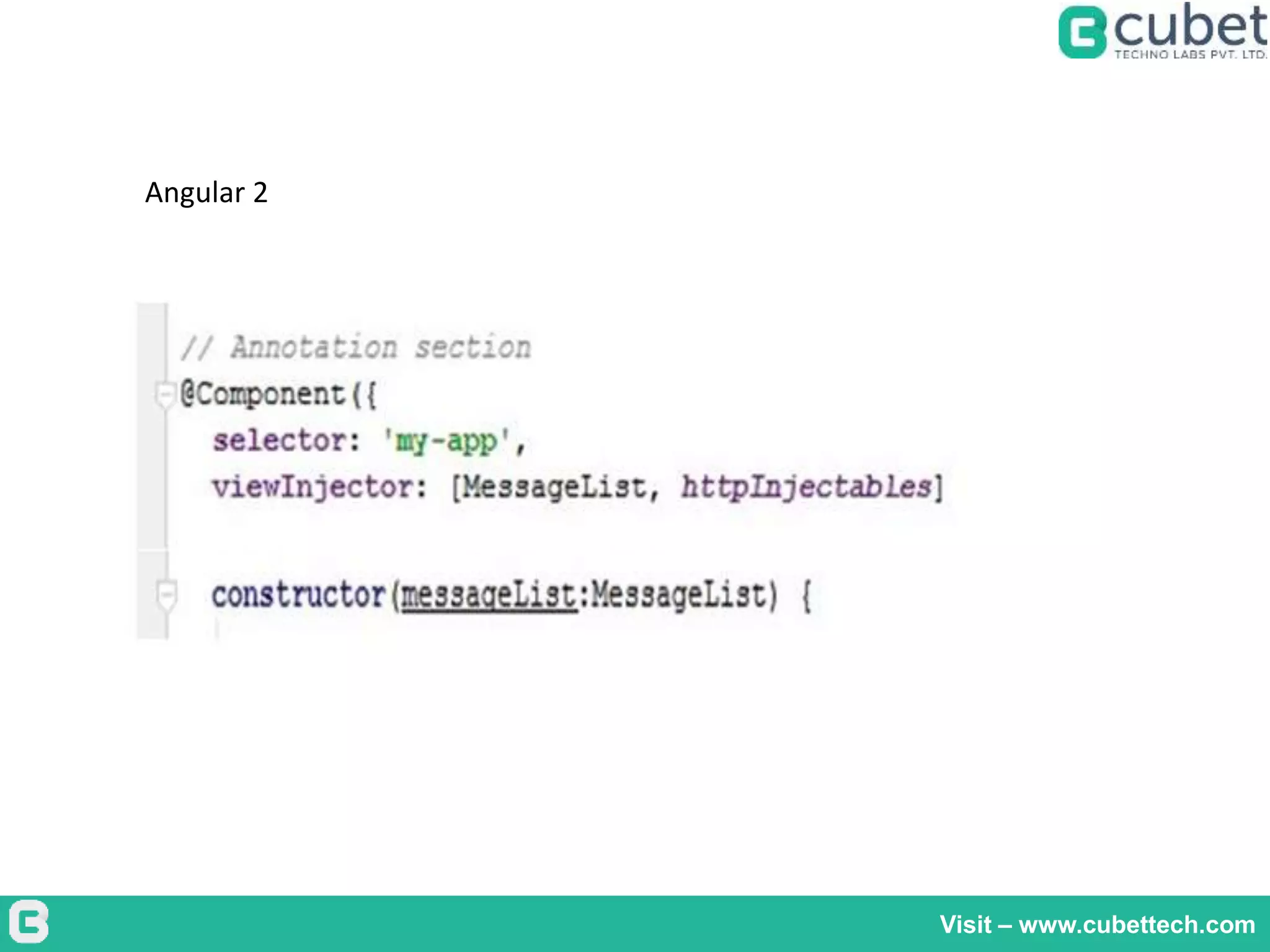
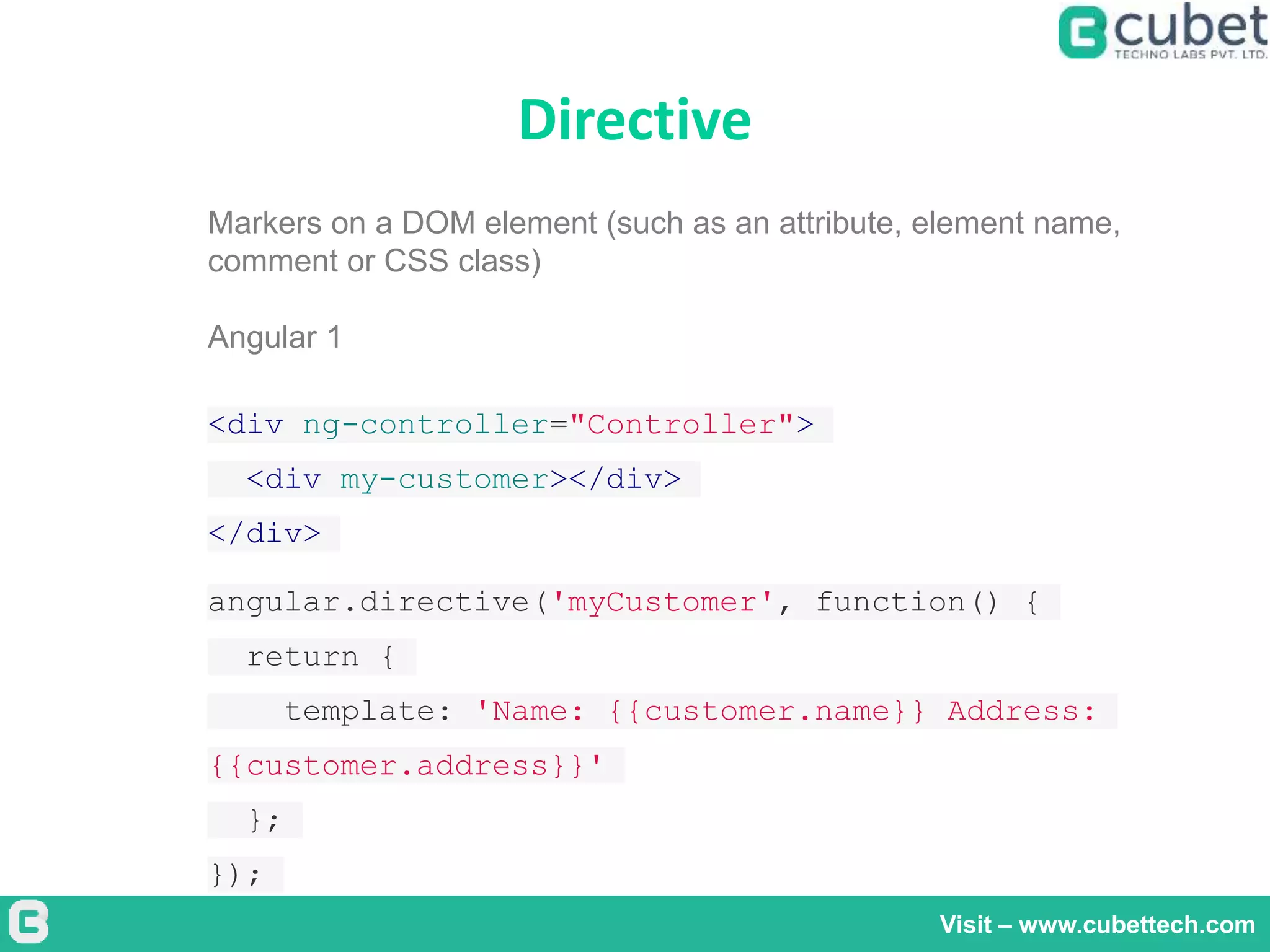
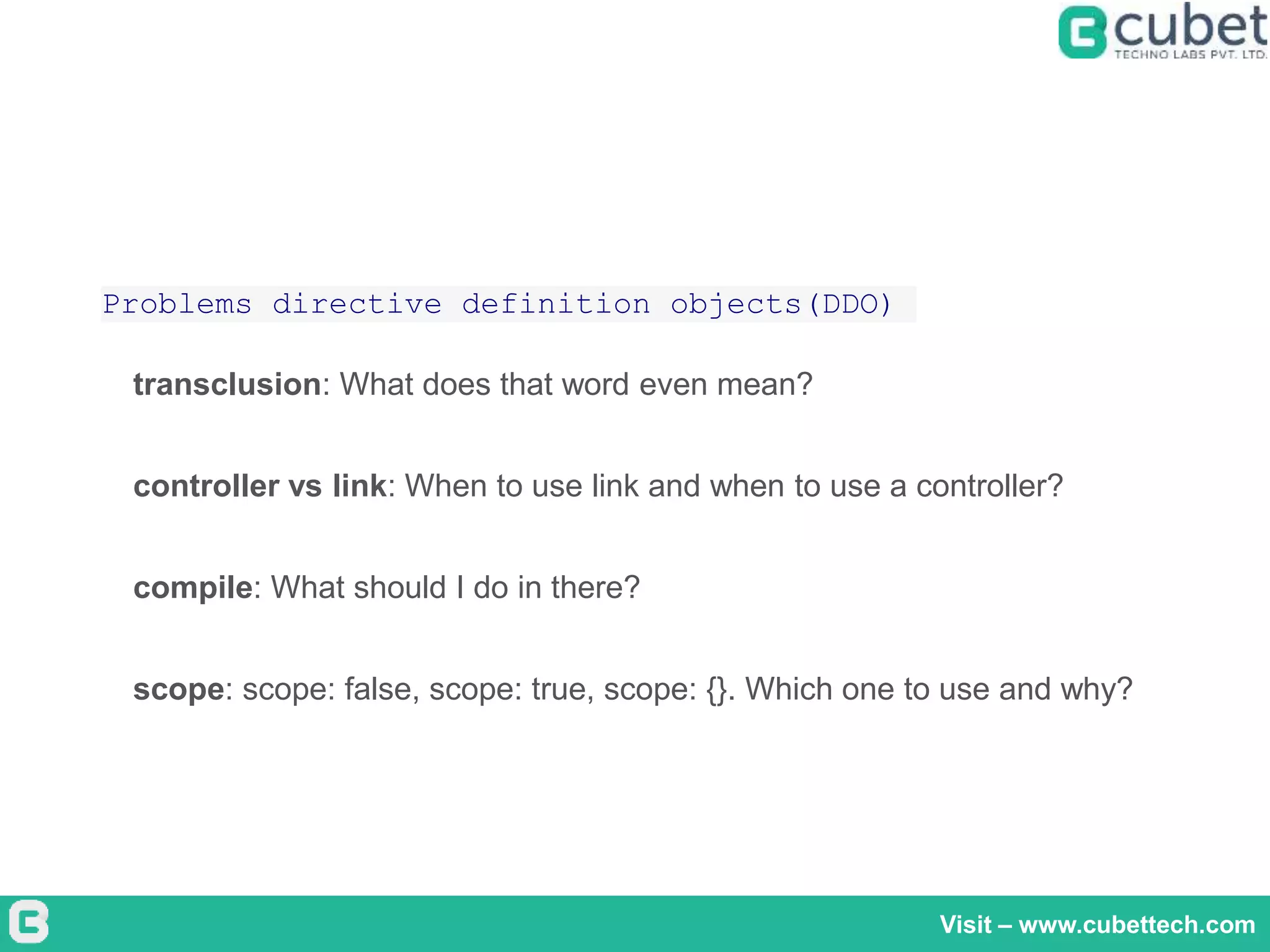
![Visit – www.cubettech.com
Angular 2
@Directive({
selector: '[tooltip]'
})
class Tooltip {
}
<div tooltip="foo">...</div>
foo: that will restrict for an element.
[foo]: that will restrict for an attribute.
.class: that will restrict for a class.
input[type=text]: that will apply this directive only in <input
type="text">](https://image.slidesharecdn.com/angularjs2ppt-170710045050/75/Angularjs-2-18-2048.jpg)
![Properties
Visit – www.cubettech.com
Old version:
<input type="text" value="foo">
The browser will parse the input element and create a node object. Then it
will start parsing each attribute to create a property inside that object. So we
will end with a node object for the input with the type and value as
properties (among others).
New version:
<img [src]="myImage">
<div [hidden]="isHidden">This div will be hidden if isHidden is true</div>](https://image.slidesharecdn.com/angularjs2ppt-170710045050/75/Angularjs-2-19-2048.jpg)
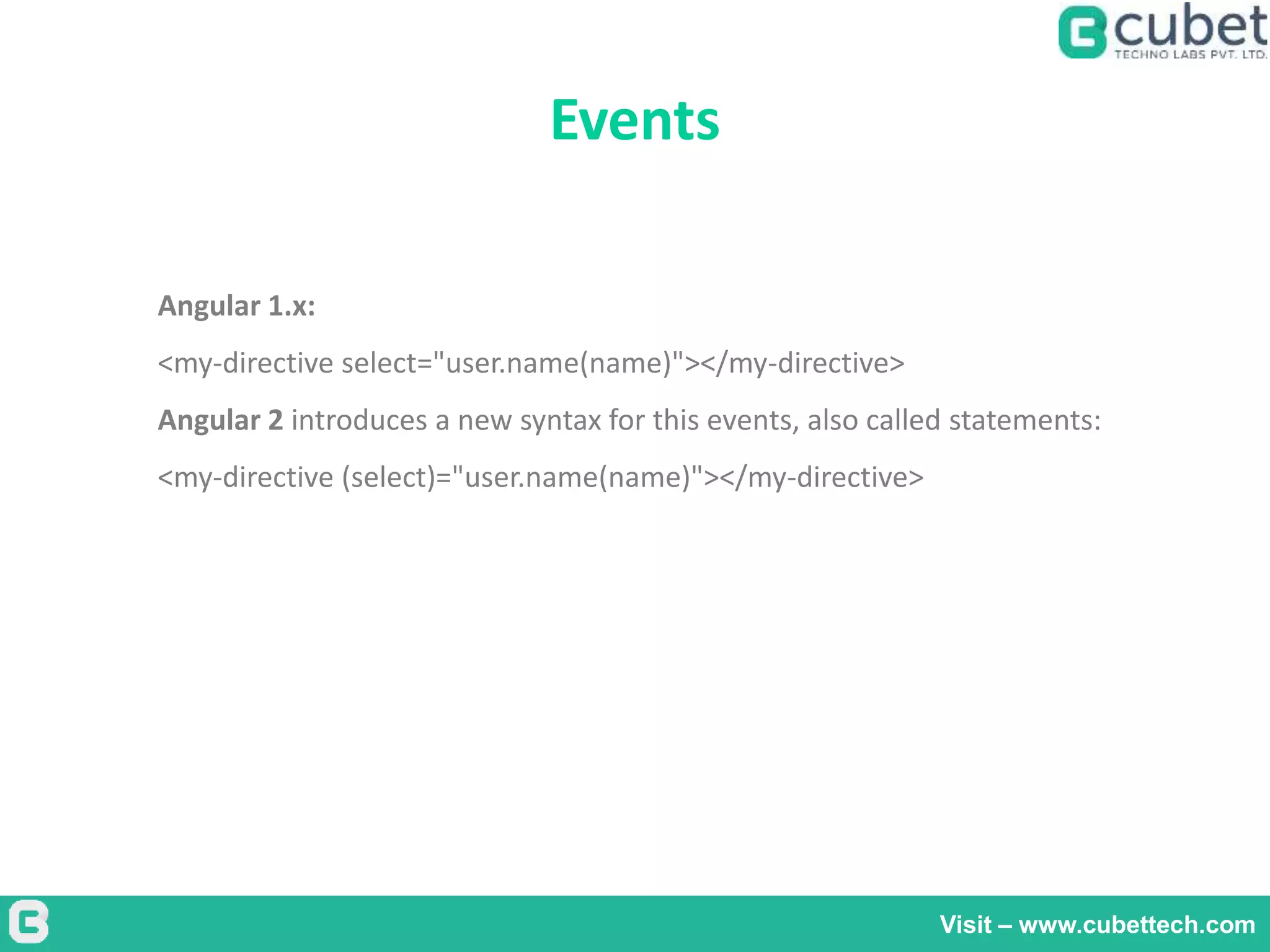
![References
Visit – www.cubettech.com
<p (click)="user.focus()">
Grab focus
</p>
<input type="text" #user [(ng-
model)]="name">
{{name}}
<input type="text" #user>
Here user reference
{{user.value}} - get value
{{user.type}} - get type](https://image.slidesharecdn.com/angularjs2ppt-170710045050/75/Angularjs-2-21-2048.jpg)
![Conclusion
Visit – www.cubettech.com
Angular 2 is the right step forward. It is way simpler than Angular 1. No more
controllers, no more scope inheritance that drives us insane, the directives
API is much easier to understand than the actual DDO. No more $apply, and
the best of all things, thanks to [properties] and (events) we removed like 30
directives that are not needed anymore and apart from that, we simplified
the way of consuming directives.](https://image.slidesharecdn.com/angularjs2ppt-170710045050/75/Angularjs-2-22-2048.jpg)
